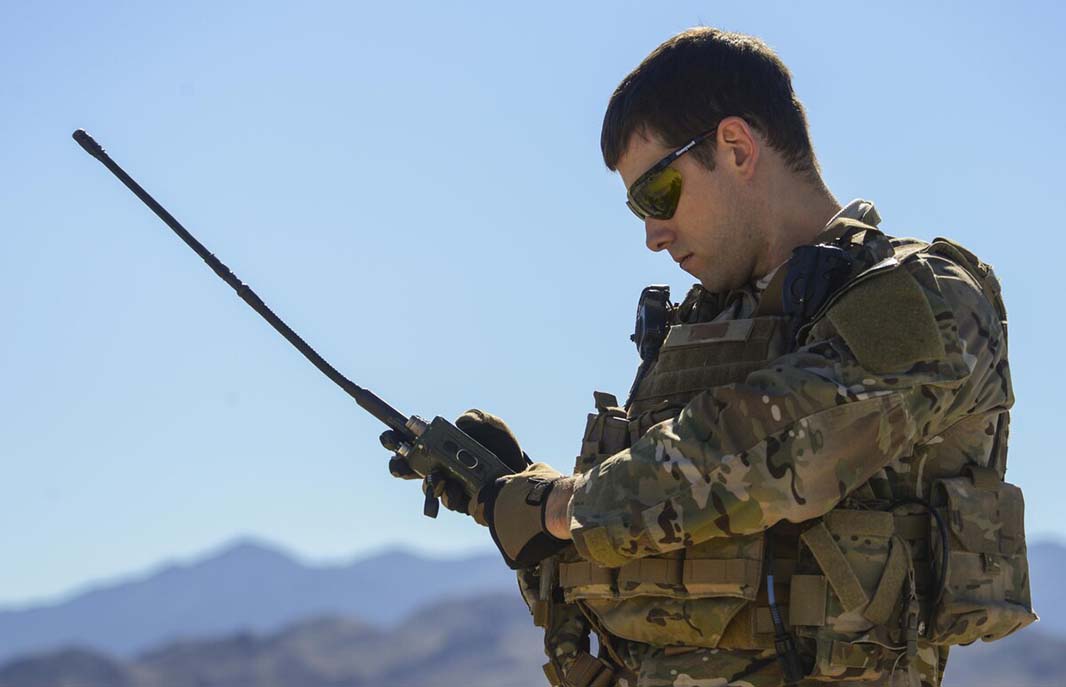Two legacy tactical communications systems, which have been mainstays of NATO and Allied nations for decades, are gradually making way for the SATURN waveform.
The Second-Generation Anti-Jam Ultra High Frequency Radio for NATO is perhaps unsurprisingly better known as SATURN, given the clumsiness of the appellation. Unlike the eponymous planet, which is around 4 billion years old, the SATURN waveform is more recent, coming into being when NATO published its Standardisation Agreement 4372. Known as STANAG-4372, the agreement was adopted by the Alliance on 1 January 1992. STANAG-4372 effectively outlines the engineering requirements for radios to be able to transmit and receive traffic using the waveform. The STANAG is secret and likely includes specifications regarding the waveform’s communications/transmission security (COMSEC/TRANSEC) arrangements, among other factors. Despite the standardisation agreement remaining outside the public domain, details of its design are freely available in the public domain. SATURN’s design features are discussed in more detail below.
Nonetheless, before discussing SATURN it is necessary to understand the waveform’s heritage, which in turn explains its attributes. NATO forces use a bewildering array of radio waveforms for surface-to-surface and air-to-surface/surface-to-air tactical radio communications. A waveform refers to the characteristics a particular radio signal must have to perform a particular set of tasks. For example, if the radio signal is to transmit data at a comparatively slow rate using encryption, it will have different characteristics compared to a radio signal transmitting data at a high rate en clair. To use an analogy involving one’s cell phone, the radio signal transmitting a text message will have unique characteristics compared to a signal carrying a voice call. Today’s military radios are software-defined systems, which means that the operator can instruct the radio to perform a particular function, such as to report the position of the soldier using the radio, at the touch of a button. Like radios used in the civilian world, a tactical radio can be tuned to a particular frequency in much the same way. Prior to the arrival of software defined radios (SDRs) in the 1980s and 1990s, users would have to physically tune the radios according to the signals they wished to transmit or receive.
What came before
To understand SATURN’s significance, it is worth taking a quick canter through the history of NATO and Allied tactical radio waveforms. The seminal Single Channel Ground and Airborne Radio System (SINCGARS) began to proliferate across US and Allied forces from the late 1980s. SINCGARS was not a waveform per se; instead, it was a family of tactical radios, around 20 in total, designed with certain characteristics. SINCGARS radios used very-high frequencies (VHF) of 30 MHz to 87.975 MHz. The radios could produce between 5 W and 50 W of transmission power according to the transceiver type. As official US Marine Corps (USMC) documents describing the SINCGARS architecture make clear, 5 W radios could be used in backpack and vehicular configurations. 50 W radios tended to be solely vehicular designs.
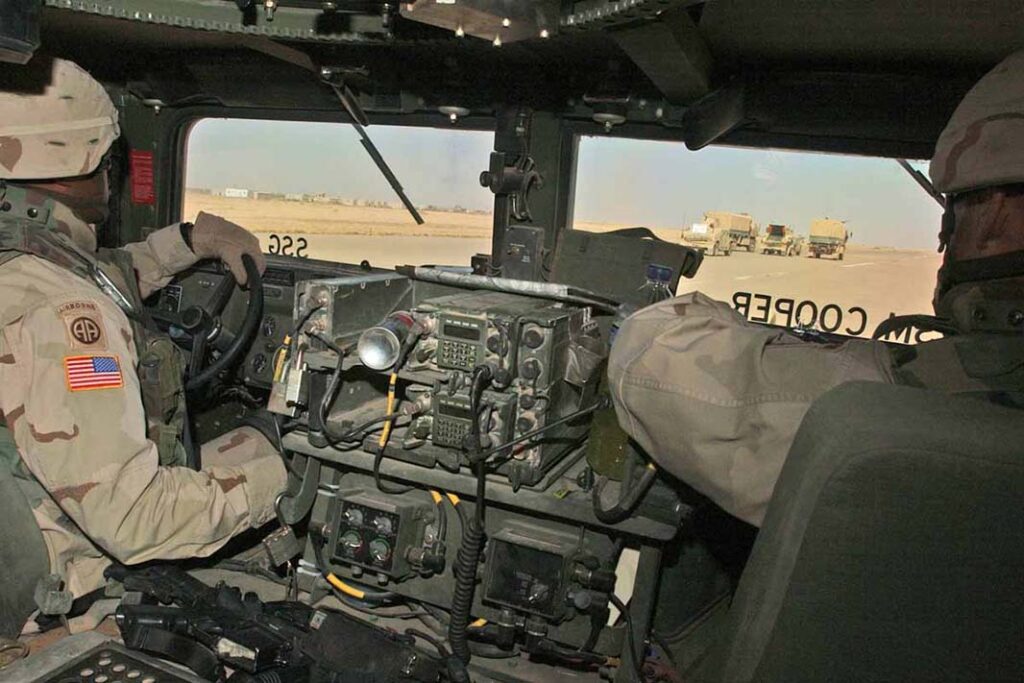
SINCGARS signals typically achieve surface-to-surface ranges of between 200 m up to 10 km. By adding a power amplifier, some of the 50 W vehicular radios can achieve ranges of circa 40 km. Each SINCGARS radio can be programmed with up to eight single-channel frequencies, which lets the user occupy eight separate channels. Each SINCGARS channel was designed to be 25 kHz wide. Given SINCGARS’ 57.975 MHz of frequency bandwidth, a total of 2,319 channels to be hosted on a single, deployed SINCGARS network when using the entire frequency bandwidth. The radio’s single channel mode was not resistant to communications jamming. Once an adversary had determined which frequencies were being used, had positioned a jammer within range of the targeted radio, and had begun their attack, the targeted transceiver would be unable to use the targeted frequency. To safeguard against such attacks, SINCGARS radios were also designed with a frequency hopping (FH) mode.
A SINCGARS radio could be loaded with a transmission security key (TSK), which would detail the wavebands and frequencies that the radio’s transmissions would hop across. As the USMC document continues, hopping would be performed in a pseudo-random sequence. All the radios in the local networks would be issued with the same TSK so their FH schemes would match. Without the TSK, the radio would only send or receive a mess of garbled signals which it could not assemble into coherent traffic.
SINCGARS radios, many of which remain in service today, were chiefly designed for voice communications. Nonetheless, these transceivers could carry data, albeit at modest speeds of up to 16 kbps. Interestingly, SINCGARS radios have been supplied by the US to Ukrainian forces since Russia’s annexation of Crimea and the subsequent Donbas War in 2014. Despite the age of the SINCGARS’ architecture design, these radios have acquitted themselves well in the face of robust Russian communications jamming. In 2017, the US Army’s Programme Executive Office for Command, Control, Communications and Networks (PEO C3N) began updating the architecture based on lessons learned from Ukraine. A key part of this modernisation is the incorporation of the US National Security Agency’s AES-256 advanced encryption standard into SINCGARS radios. AES-256 provides additional COMSEC/TRANSEC beyond the FH functions in the form of encryption.
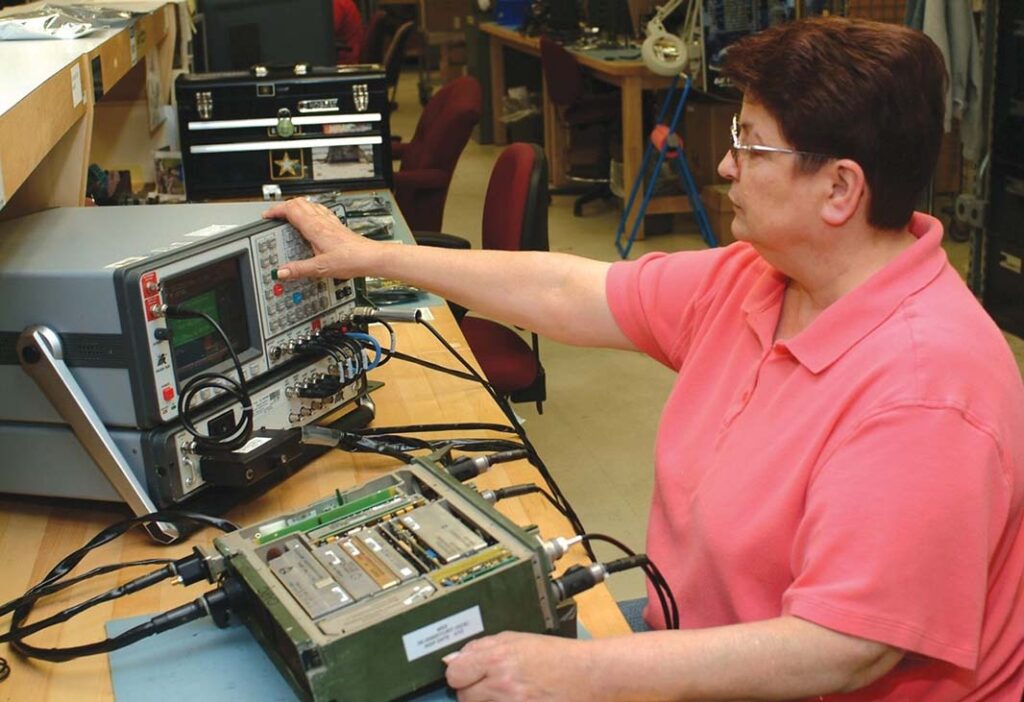
SINCGARS was essentially a family of radios which had the accompanying signal performance characteristics ‘baked’ into them. Since SINCGARS was developed, these characteristics have been subsequently enshrined in software. This software can be loaded into later-generation SDR radios to allow them to communicate with legacy SINCGARS transceivers using signals that the latter can handle. This approach has allowed handheld radios with the appropriate software to inhabit SINCGARS networks. This is important if a dismounted squad commander wants to maintain contact with a vehicle equipped with a legacy SINCGARS radio, for example.
As the PEO C3N’s work indicates, SINCGARS is likely to remain in service for several years to come. For this reason, tactical radios currently being procured by the PEO C3N for the US armed forces are backwards compatible with the architecture. For instance, Thales’ AN/PRC-148 multi-band inter/intra team radio and L3Harris AN/PRC-163 multi-channel handheld radio can both communicate with SINCGARS systems. Enshrining SINCGARS functionality in software has effectively created a SINCGARS waveform that can be installed on both new and legacy SDRs.
SINCGARS sunset
Despite the improvements being conferred on SINCGARS, the architecture will eventually be phased out across those NATO and Allied nations using it. SATURN is destined to replace SINCGARS and will also supersede the existing HAVEQUICK-I/II surface-to-air/air-to-surface and air-to-air waveform. HAVEQUICK-I/II is of a slightly younger vintage compared to SINCGARS. HAVEQUICK-I/II was formally introduced in the US and across NATO and Allied nations from 1980. Work had commenced on HAVEQUICK-I/II in 1977 in the United States to provide UHF radios capable of voice communications with enhanced COMSEC/TRANSEC. The US Air Force (USAF) was the major sponsor behind HAVEQUICK-I/II’s development. Unlike SINCGARS, HAVEQUICK-I/II was a waveform design which would be installed in tactical radios to provide the former’s unique signal characteristics.
Unlike SINCGARS, HAVEQUICK-I/II provides ultra-high frequency (UHF) communications using a waveband of 225 MHz to 400 MHz. The difference between HAVEQUICK-I and HAVEQUICK-II is that the first incarnation provided single-channel communications with basic FH. Work commenced on HAVEQUICK-II in 1982 following the USAF’s identification of shortcomings in HAVEQUICK-I. HAVEQUICK-II has improved FH performance as it uses a wider band of frequencies to this end and can use any one of circa 7,000 frequencies to provide channels.
According to USMC documents, users must enter a 36-digit ‘Word of the Day’ transmission security key into a HAVEQUICK-I/II compatible radio. The security key details the FH pattern and rate. All HAVEQUICK-I/II radios using a specific network must be synchronised with a common timing source. A source could be the position, navigation and timing signal transmitted by a global navigation satellite system (GNSS) constellation. As FH is a function of how many hops are performed over specific waveband during a specific time, a reliable timing source with which all the radios on the network can synchronise is vital. As a general rule, HAVEQUICK-I/II radios tend to use a timing signal transmitting ‘Zulu Time’ (more commonly known as Greenwich Mean Time).
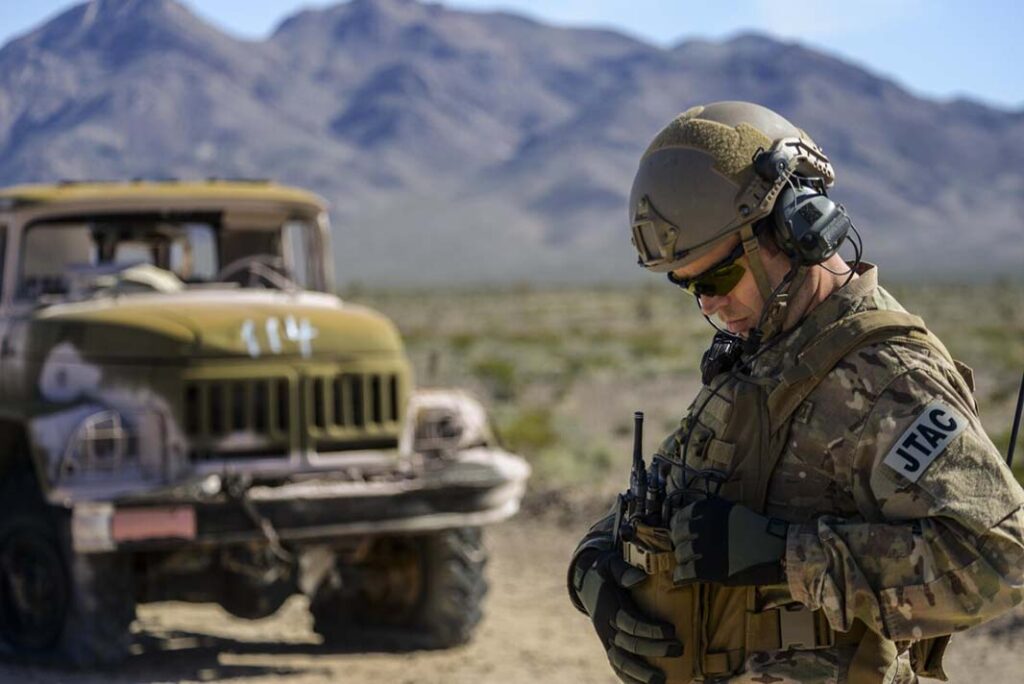
Like SINCGARS, the characteristics of the HAVEQUICK-I/II waveform has been enshrined in software that can be loaded into SDRs to allow them to send and receive HAVEQUICK-I/II traffic. Official documents seen by the author say the original HAVEQUICK-I waveform has largely fallen out of use. HAVEQUICK-II is now the standard NATO/Allied waveform for surface-to-air/air-to-surface and air-to-air communications. As such, HAVEQUICK-II compatible radios are extensively used by joint terminal attack controllers. HAVEQUICK-I/II traffic is not encrypted. The waveform’s FH is intended to provide some electronic counter-countermeasure resistance against communications jamming.
Replacing legacy waveforms
SATURN partially emerged from an abortive effort by the US Air Force (USAF) to replace the HAVEQUICK-I/II waveform, with HAVEQUICK-II forming the initial basis for the SATURN architecture. The resulting SATURN STANAG-4372 was drafted by the United States later being ratified by NATO in 1992. As an analysis by Forecast International noted, budget constraints forced the US to withdraw from the initiative, which ultimately ended the USAF’s involvement with the SATURN project as its sponsor. Fortunately, the programme was adjusted and the USAF transferred SATURN’s technological specifications to NATO. The USAF also stated it would adopt SATURN as a replacement for HAVEQUICK-II once the STANAG was ratified.
STANAG-4372 instructs radio engineers on the parameters of the SATURN waveform so that transceivers can be configured to send and receive traffic using this capability. Sources at Rohde and Schwarz shared with the author that thousands of radios in service across NATO and Allied nations have already installed the waveform. NATO members, the United States among them, are mandated to implement SATURN for surface-to-air and air-to-surface communications. The sources continued that users may perform all the functions with SATURN that they can currently with HAVEQUICK-I/II and SINCGARS. Unlike SINCGARS and HAVEQUICK-I/II, SATURN can carry Link-22 tactical information. Link-22 is a NATO standard tactical data link chiefly used to support maritime operations. The link can move track and tactical information across frequencies of 2 MHz to 29.9 MHz and 225 MHz to 399.975 MHz. Link-22 traffic is enclosed in the same J-series format messaging as the NATO and Allied Link-11 and Link-16 Tactical Datalinks (TDLs). These latter TDLs support maritime and air operations respectively. Enabling J-series message carriage across SATURN will improve the interoperability of air, land and maritime forces at tactical and operational levels.
Improved performance
Unlike the early days of SINCGARS, SATURN is designed to be radio-agnostic, the Rohde & Schwarz sources added, and can be ‘loaded’ into a radio based on the stipulations of STANAG-4372. Ostensibly, SATURN is designed to work in the same 225 MHz to 400 MHz waveband as HAVEQUICK-I/II. Nonetheless, the Rohde & Schwarz sources continued that they have performed tests using the SATURN waveform in the VHF waveband of 30 MHz to 300 MHz saying that it “would work just fine there”.
A major change is that SATURN will “be significantly more robust in jammed environments” the same sources say. The waveform has improved COMSEC/TRANSEC vis-à-vis the legacy systems discussed in this article. Details of these COMSEC/TRANSEC techniques have been understandably vague; one technique which has been revealed is the waveform’s fast FH. A lesson learned from the battlefields of Ukraine is that some FH configurations can be detected with relative ease. Once a FH signal has been determined, the waveband it is hopping across can be attacked by jammers in range of the radios using it. Increasing the hop rate, and widening the waveband used therein, makes it more difficult for EW practitioners to detect and jam the associated frequencies and/or wavebands.
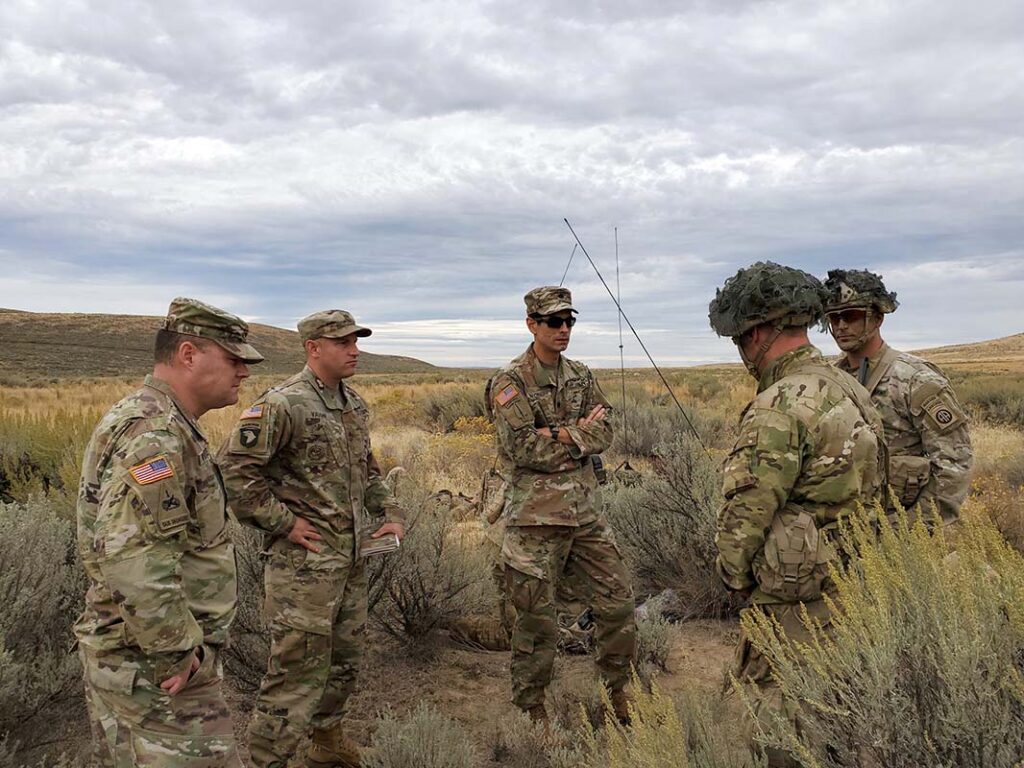
SATURN will eventually supersede both HAVEQUICK-I/II and SINCGARS. It is known that SATURN has already been used operationally by NATO nations, although the exact particulars of this remain classified. Other sources have said the drawdown of SINCGARS and HAVEQUICK-I/II could commence over the next two years. Both SINCGARS and HAVEQUICK-I/II have had illustrious histories and continued to work well despite their age. SATURN may have a similarly long career. It is also possible that EW cadres in potentially hostile states such as Russia and the People’s Republic of China may eventually ascertain how to successfully attack SINCGARS and HAVEQUICK-I/II. Hopefully by then, NATO and Allied nations will have already embraced the more advanced SATURN waveform. At that point, jamming SINCGARS and HAVEQUICK-I/II may simply be a waste of effort.
Dr Thomas Withington
Author: Dr Thomas Withington is an independent electronic warfare, radar and military communications specialist based in France.
